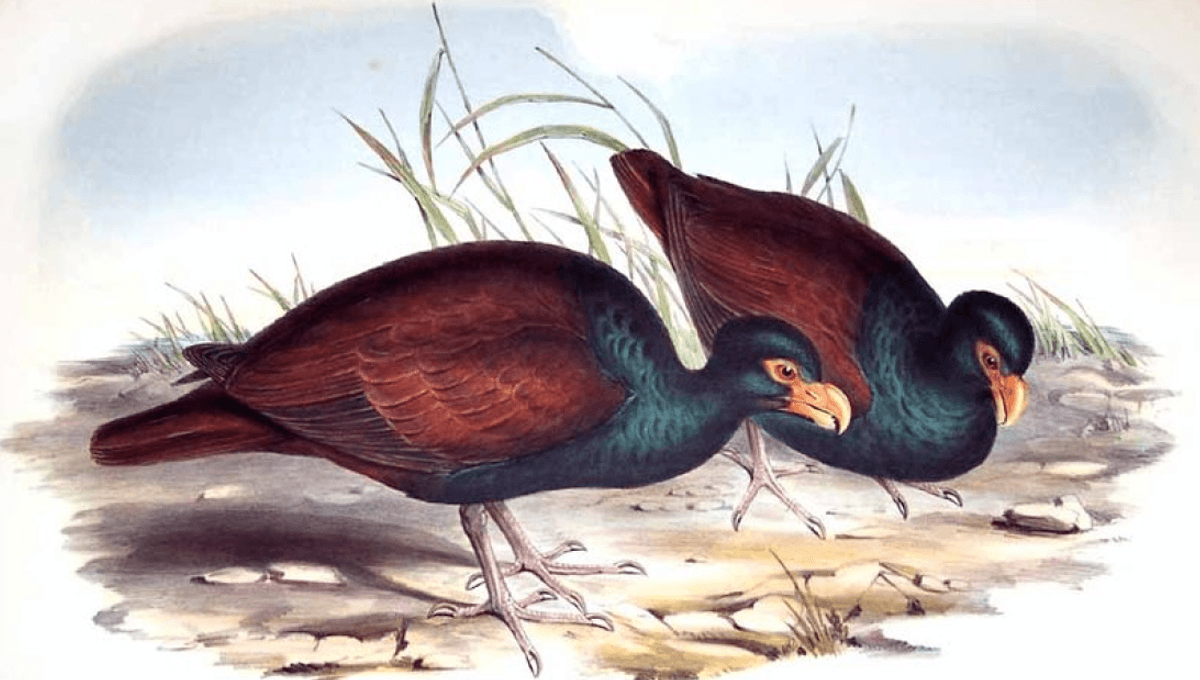
Have you ever heard of the tooth-billed pigeon? Also known as manumea, or the “little dodo” (as one of its closest living relatives), it’s so rare it’s considered a “lost” species. One that hasn’t been photographed since 2013, but hope is not lost. Scientists were able to successfully detect a bird in the wild, and now there’s hope that novel bioacoustics technology could help us track them down.
The tech was made possible thanks to a collaboration between The Colossal Foundation (as in, Colossal of woolly mouse and dire wolf fame) and the environmental organization Samoa Conservation Society. In Samoa, the tooth-billed pigeon (Didunculus strigirostris) is considered a national treasure that once scampered about in their thousands back in the 1980s.
Threats from predation by invasive species, as well as habitat loss and hunting, have since decimated their numbers. Now, it’s estimated there are fewer than 100 left. They are a species on the brink, but there are steps we can take to try and prevent their extinction.
First things first, we’ve got to find some, and that’s where this novel bioacoustics tech comes in. The custom-made technology uses an advanced machine learning algorithm that’s capable of detecting the unique calls of tooth-billed pigeons with 95 percent accuracy. How do you build such a thing for a bird that’s so rare? We wanted to know, too.
“Our AI team built the tooth-billed pigeon classifier on top of open-sourced bird call classifiers for commonly occurring birds,” said Colossal’s Chief Animal Officer Matt James to IFLScience. “We then used a denoiser to help remove the background sounds found on our recordings of Samoa and automated a one-shot bird call classification pipeline designed for rare species absent from large publicly available classifiers like BirdNET and Perch.”
“While these models excel at detecting common birds with abundant training data, they lack options for species with only one to three known recordings – a critical limitation for conservationists monitoring the last remaining individuals of endangered birds. To address this, we leveraged the embedding space of large bird classification networks and developed a classifier using cosine similarity to optimize detection with minimal training data.”
In alliance with the IUCN SSC Pigeon and Dove Specialist Group and BirdLife International, the collaboration hopes to use Colossal’s AI bioacoustic tools to find the birds, and then try to capture live specimens to biobank. This will also enable them to assess if it’s possible to establish a captive breeding program that could act as a safeguard should it not be possible to prevent extinction in the wild before it’s too late.
And as for those samples? They’ll have all sorts of potential.
“Once we have sampled an animal, processed the tissue, cultured cells, and frozen them down into our biobank, we will continue to care for those cells in our bank until a researcher requests access to the samples for their research or the time comes to clone an animal from the sample,” said James. “In that case, we will thaw the samples, culture out more cells, and then create embryos from those cells in order to transfer that embryo into a surrogate.”
“We may choose to clone a sample from our biobank because we are looking to create a recovery population of a critically endangered species that needs fresh genetics injected back into the population, or because a species went extinct in the wild and we need to establish a captive recovery program.”
Get in losers, we’re going pigeon catching.
Source Link: “There Are Glimmers Of Hope”: Search For One Of The World’s Most Endangered Pigeons Just Scored A Big Win